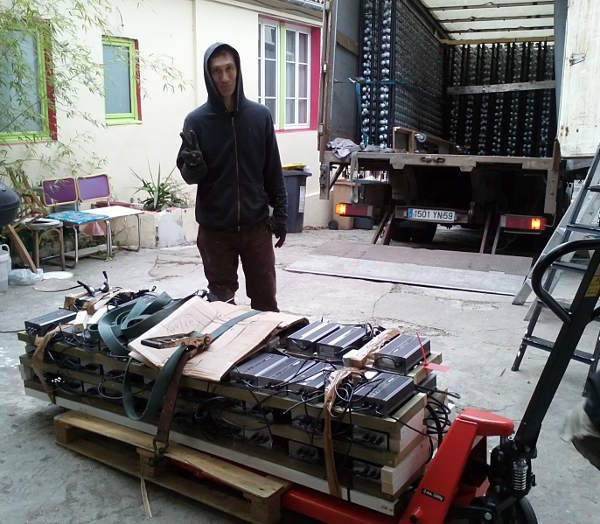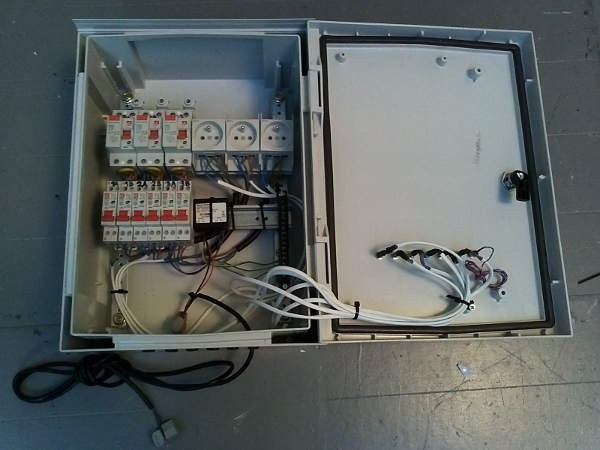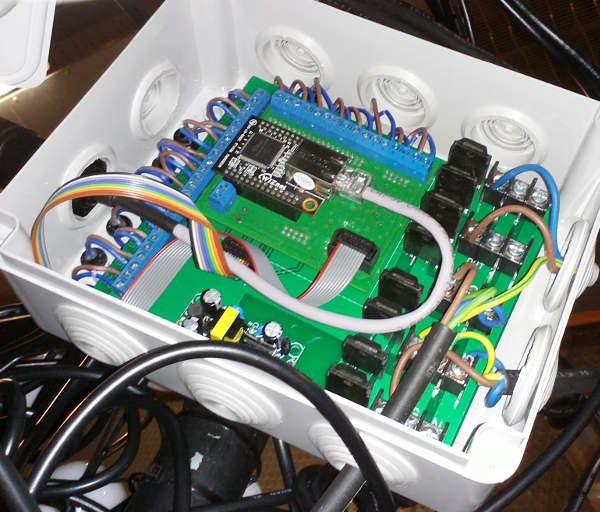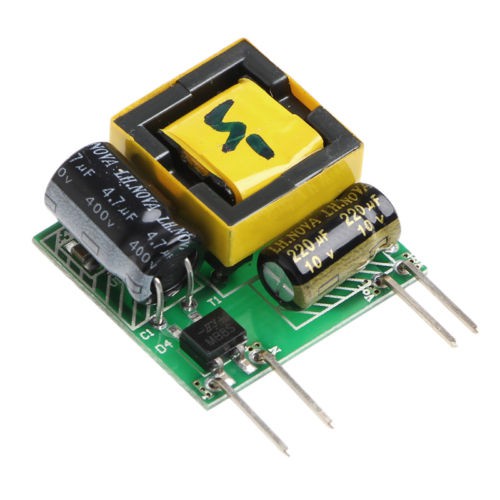See the rest at #Power On Sequencer bis
Most low-voltage power supplies are switched-mode AC/DC converters and in some projects, I must use a LOT of them. For example, this is only one half of the 120 PSU that were used for #Mons2015 LED Screen ElectroSuper

To provide all the required juice, I build distribution systems such as this box:

But when you turn the power on, you have 120 PSU drawing insane amounts of current while they load their input capacitors. The inrush current is enough to make everything trip (I'll save you the conservative calculations).
This inrush problem has been addressed from the beginning by adding many local SSR near the PSU, controlled by their respective FPGA boards (a #WizYasep)

The above image shows a local distribution box that receives 16A and switches 4×4A. This is better but still not satisfying.
The "hack" that is the heart of this project consists in moving the SSR behind the circuit breakers, in the main distribution box. This increases safety and isolates the potential sources of faults.
The other "hack" is that the SSRs are mounted on a PCB that directly plugs into the circuit breakers ! It's much more convenient because this removes wiring, uses less space and is potentially safer.
Yet another "hack" is to go completely "analog": in the past I used programming (FPGA, I considered microcontrollers) but a simple delay line (resistor-capacitor-transistor such as in #Yet Another Electronic Lampyridae) is more than enough !
I just have to solve the power supply issue but a small wall wart is enough.
The system that I'm about to design has:
- one mains power input
- one small AC/DC low-voltage power supply
- one "delay line"
- 4 static relays (SSR)
- Chain-in and chain-out signals (optocouplers)
They are placed on a board that has the shape of an electrical busbar that can directly plug into a row of circuit breakers. But instead of being a normal busbar, each output is individually switched on :-)
Several boards can be cascaded, to prevent simultaneous turn-on of independent circuits.
Logs:
1. PSU
2. Latest considerations
3. Dimensions
4. Spark gaps
5. Shelving
 Yann Guidon / YGDES
Yann Guidon / YGDES


You can run an optoisolator off AC side using a cap-dropper for detecting missing power.
Use a proper safety rated X-cap.
You can also load up the power supply to overcome the capacitance. :P